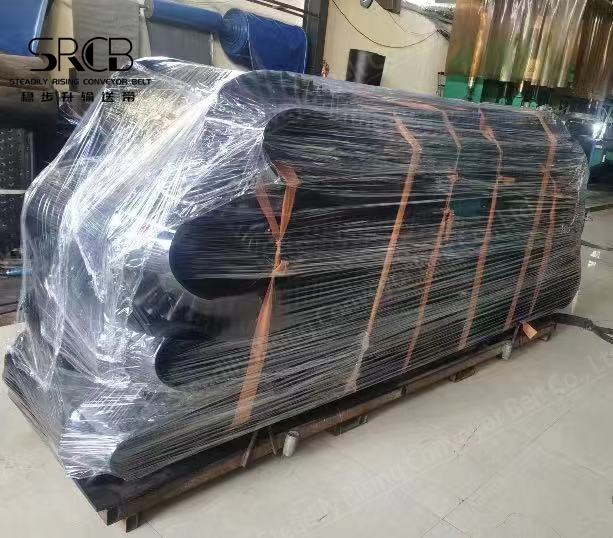
The introduction of using the steep incline conveyor belt
2024-06-13 16:08In February 2022, our company shipped a 133-meter high-angle conveyor belt with a bandwidth of 1000mm to a mining site in Brazil for high-angle material transportation.
The high-angle corrugated sidewall belt consists of three parts: base belt, sidewall, and diaphragm. The ribs prevent materials from slipping and falling. In order to make it easier to bypass the roller, the ribs are designed in a corrugated shape; the function of the diaphragm is to support the material. In order to achieve large-angle conveying, a T-type TC type is adopted.
The ribs and diaphragms are connected to the base belt by secondary vulcanization, which has high connection strength. High-angle conveyor belts are mainly used for horizontal transportation of bulk materials such as coal, coke, sand and gravel, and can also be used for vertical transportation of finished items.
The steep incline conveyor belt, also know as steep angle belt conveyor, mainly used in transporting materials vertically or nearly vertically. This kind of conveyor belt take up small area, large transportation volume, particularly suits for conveying powdery, granular and small block materials that are easy to scatter. The following are some key steps and precautions when using the steep incline conveyor belt.
1. Choosing the appropriate conveyor belt: Making sure the type, specification and the material of conveyor belt that suits for transported materials and working ambient.
2. Installation and adjustment: According to the instructions from manufacturer to install and adjust the conveyor belt. Ensuring the conveyor belt remains stable avoid excessive tension or relaxation during the operation.
3. Start and stop: before start the conveyor belt, make sure there is no personnel on the path of the conveyor belt, and inspect if all the equipment could operate normally. When stop the conveyor belt, the conveyor belt should be the conveyor belt gradually decelerated and stopped.
4. Monitoring and maintenance: Check the operation condition of conveyor belt regularly, including whether there is wear, tear or other damage. Cleaning the debris on the conveyor belt in a timely manner, in order to keep it clean.
5. Paying attention to the safety and operation specifications: When operate the conveyor belt, should observed the relevant safety regulations and operating specifications. To avoid the unnecessary adjustment or adjustment while the conveyor belt is running.
6. Handling faults: if the conveyor belt fails or abnormal condition, should stop the machine immediately and check the reason. Do not try to repair it by yourself, should contact a professional for repair.

